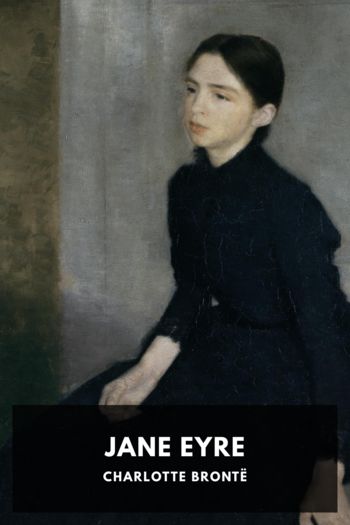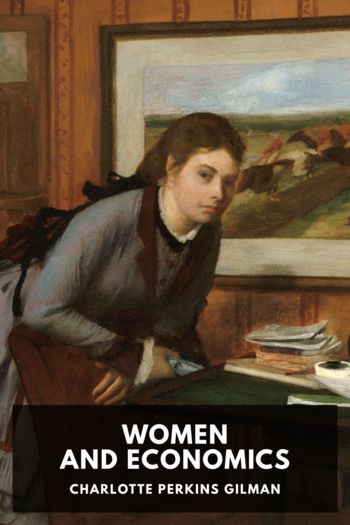Victoria Sees It, Carrie Jenkins [best classic books TXT] 📗

- Author: Carrie Jenkins
Book online «Victoria Sees It, Carrie Jenkins [best classic books TXT] 📗». Author Carrie Jenkins
I pulled on the stop cord as though it were an emergency brake. Then I closed my eyes and started counting backwards from one thousand, suspending time until our bus-body shook and stopped moving.
When I felt the doors open and the cold air rush in, I thrashed in its direction, a landed fish desperate for the water. I stumbled on the step and apologized to the world in general. Outside, I could breathe again. Fresh, wet night gushed around my body and splashed over my hot face. I took stock. It wasn’t that bad. Only two stops before I usually got off. Close enough to walk home.
Leaves hung dark and dripping from the bottom branches of garden shrubs, forming spiky characters from an alphabet alien to me. What were they saying? I didn’t have time to find out. I hurried along. A skunk led me the last few metres, wiggling along a few paces ahead on the black pavement, the undulating M of its long white stripe morphing into the V of its facial markings as I opened my squeaky front gate and it slinked its head around to check on the stray noise.
Then it disappeared into the night, so I did the same.
—
Disappearing is generally a good idea. I begin to understand why women do it. A few summers ago, at a conference in San Francisco, I skipped out of the dinner that the speakers were supposed to attend. There was nothing I trusted my body to digest at the restaurant they’d chosen without asking me what I ate, and when I sat down, opposite the only other woman on the program, she stood up and moved to the other end of the table to talk with a famous man who had just arrived. It left me the odd one out in a long line of pairs. She left as if I wasn’t there, like how the girls at school used to if I tried to sit with them. I quickly learned not to do that. Why has it taken me so long to stop trying to socialize with academics? I don’t know. I suppose kids learn faster than adults do.
I don’t think anyone noticed me slipping away from that dinner. I wandered around a little empty park near Fisherman’s Wharf. I found a flight of steel stairs, part of what I suppose must have been some kind of sculpture. It was already getting dark so I wasn’t totally sure what it was. The stairs led me up to a little ledge overlooking the park, with a small pond beneath it. The ledge was surrounded by a waist-high barrier, to keep people from falling off. Taken as a whole, the contraption was reminiscent of a ducking stool. A device for torturing women if they were witches. Or accused of being witches. Or, you know, if they talked too much. Do you know about Benjamin West? He wrote poetry in praise of the latter practice. No brawling wives, no furious wenches, / No fire so hot but water quenches. That’s a real poem, I didn’t make it up. Of course, there would have been no ducking stools in San Francisco. That echo was all out of place. North American cities always feel flimsy that way, plastered over with European histories, stories without roots. They don’t belong here any more than I do.
In the half-light I scanned the ledge for graffiti. There’s usually something on such a landmark, like there’s usually dog pee on a lamppost. I was surprised to find just one inscription. Perhaps this wasn’t a good enough spot to be worth much writing. Or perhaps the metal was too uncooperative a surface to be worth the effort, except for that of the most dedicated. The most devoted. Those to whom the heightened challenge might only amplify the meaning, the sentiment, the power of what was to be engraved here. I squinted to make out the lonely scratching:
C
+
C
4 EVA
The whole was enclosed in a misshapen and lopsided heart.
C and C were Friscans in love, obviously, once upon a time. Teen sweethearts. Imagine it: one solitary C returns to this place every year. To climb these very stairs, visit this scratchy remnant of their time together. It is, in its way, an act of pilgrimage: C stops on each step, whispers what might be a prayer. At the stroke of midnight C arrives at the ledge. Advances towards the barrier, weeping reverently. Approaches the relic with head bowed. Kneels. There is a ghostly air, a laying on of hands. Healing is largely a matter of having hope, and this symbol is the last echo of something that has disappeared, something that used to be here, that should be here, C knows. But somehow it isn’t. Somehow it’s been snatched from C’s world, leaving only this behind. Most relics are pieces of something dead, and you have to take on faith that what you’re looking at is really what it’s purporting to be. C’s faith is strong.
It’s a sad story. Isn’t it? I did make this one up. Maybe it’s true, I don’t know. It doesn’t matter. I have no choice but to interpret the symbols around me. Symbols force themselves upon us as being symbolic, they push their meanings onto us. Whatever we design to keep order, to keep ourselves in order, it inevitably paints us into a corner. It’s only when your symbols are all starting to fall apart that you have a chance to escape them, you know? Until then they are so opaque, so dense, that they stop you seeing more than a foot in front of your face. Was ever such a dreary, dismal, unprofitable world? See how the yellow fog swirls down the street and drifts across the dun-colored houses. What could be more hopelessly prosaic and material? It keeps your focus on the superficial. The surfaces of things. And our problem is that we learn to stay like that forever, while it quietly





Comments (0)